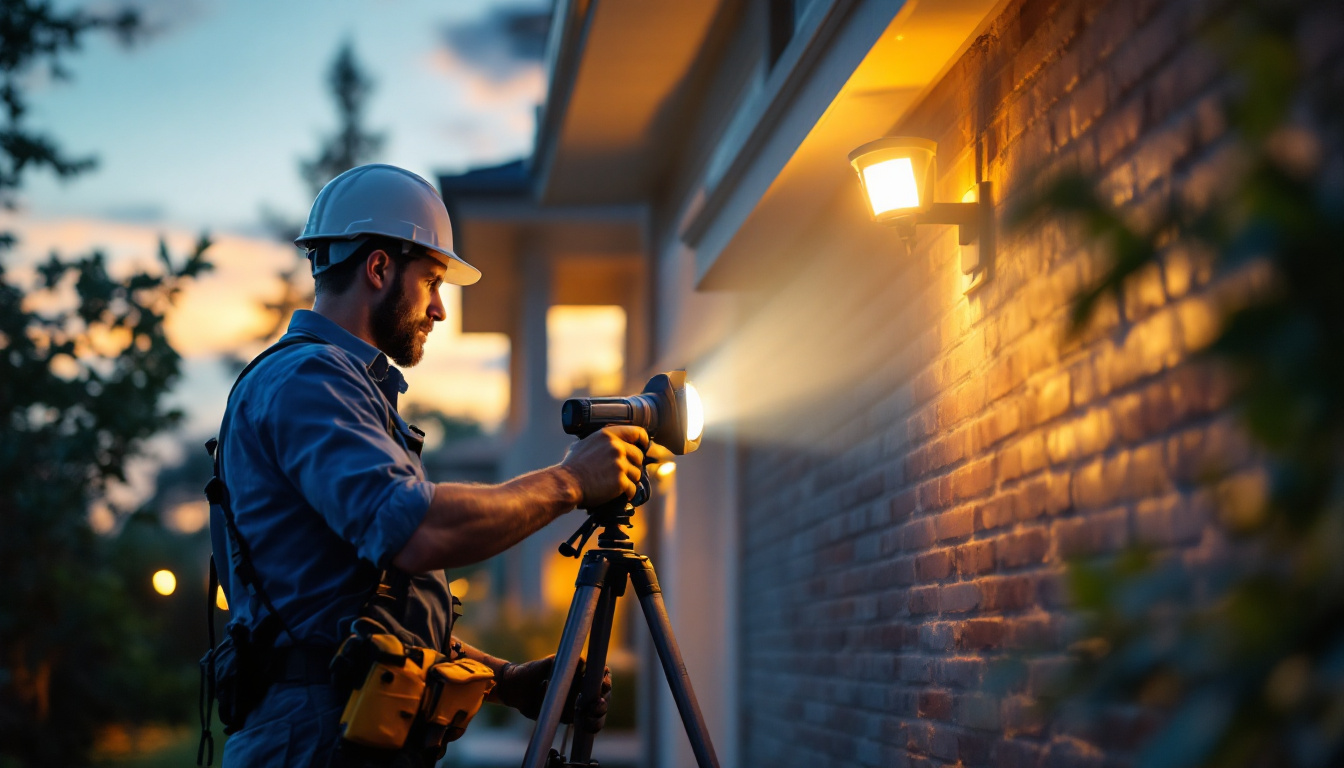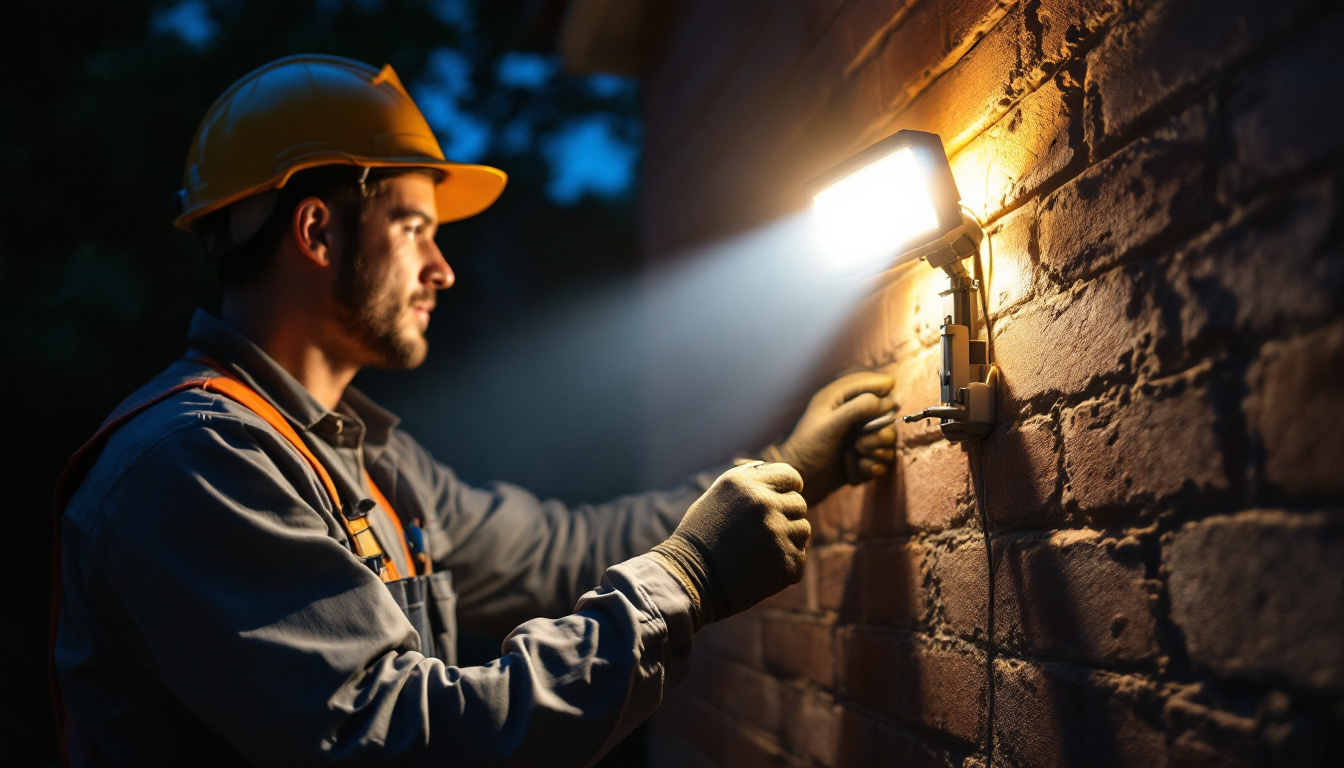
In the world of outdoor lighting, understanding the various types of fixtures and their applications is crucial for lighting contractors. This quick guide aims to provide essential insights into outdoor lights, helping professionals enhance their projects and meet client expectations. From landscape lighting to security solutions, each type of outdoor light serves a unique purpose.
Outdoor lighting can be categorized into several types, each designed for specific applications. Familiarity with these categories allows contractors to recommend the right solutions to their clients.
Landscape lighting is primarily used to enhance the aesthetic appeal of outdoor spaces. It includes fixtures like path lights, spotlights, and floodlights that illuminate gardens, walkways, and architectural features. Proper placement and selection of fixtures can transform a mundane garden into a captivating outdoor retreat.
When installing landscape lighting, consider the color temperature of the bulbs. Warmer tones (around 2700K) tend to create a welcoming atmosphere, while cooler tones (above 4000K) can give a more modern, stark appearance. Additionally, using dimmers can help adjust the brightness to suit different occasions. Incorporating features such as solar-powered lights can also be an eco-friendly option, allowing for energy savings while still providing beautiful illumination. Furthermore, strategically placing lights to highlight trees or water features can create stunning focal points that enhance the overall ambiance of the outdoor space.
Security lighting plays a vital role in enhancing safety and deterring crime. This type of lighting often includes motion-sensor lights, floodlights, and wall-mounted fixtures. The primary goal is to illuminate dark areas around a property, making it less appealing to potential intruders.
When selecting security lights, it is essential to consider their brightness and coverage area. LED floodlights are a popular choice due to their energy efficiency and long lifespan. Additionally, integrating smart technology can provide homeowners with remote access and control over their security lighting systems. Features such as scheduling and alerts can further enhance security measures, allowing homeowners to simulate occupancy when they are away. Moreover, the strategic placement of lights near entry points and along pathways can significantly reduce the risk of accidents and improve the overall safety of the property.
Architectural lighting focuses on highlighting the features of a building or structure. This can include uplighting, downlighting, and accent lighting that draws attention to specific elements such as columns, facades, or entryways. Effective architectural lighting not only enhances the beauty of a structure but also improves visibility and safety.
When designing an architectural lighting scheme, consider the building’s style and the surrounding environment. The choice of fixtures should complement the architecture while providing adequate illumination. Using adjustable fixtures can allow for flexibility in changing the lighting effects as needed. Additionally, incorporating color-changing LED lights can add a dynamic element to the design, enabling the lighting to adapt to different occasions or seasons. This versatility can be particularly beneficial for commercial properties, where branding and ambiance play critical roles in attracting customers and creating memorable experiences.
Designing an effective outdoor lighting system requires careful planning and consideration of various factors. Understanding these elements can help contractors create functional and aesthetically pleasing lighting solutions.
Before selecting outdoor lights, it is vital to determine the primary purpose of the lighting system. Is it for safety, aesthetics, or both? Understanding the client’s needs will guide the selection of fixtures and placement. For instance, if the goal is to enhance security, motion-sensor lights may be prioritized, while aesthetic lighting may focus on softer, decorative fixtures.
Furthermore, the intended use of the outdoor space plays a crucial role in lighting design. For example, pathways and driveways require brighter, more focused lighting to ensure safe navigation, while patios and gardens may benefit from softer, ambient lighting that creates a welcoming atmosphere for social gatherings. By aligning the lighting design with the specific activities that will take place in these areas, designers can enhance both functionality and user experience.
Light distribution refers to how light is spread across a space. Different fixtures provide varying levels of intensity and coverage. For example, floodlights offer broad illumination, while spotlights provide focused beams. It is crucial to balance light intensity to avoid overly bright or dim areas, which can detract from the overall effectiveness of the lighting design.
Using a combination of different types of fixtures can help achieve the desired light distribution. Layering light sources—such as combining ambient, task, and accent lighting—can create a well-rounded outdoor lighting scheme. Additionally, considering the color temperature of the lights can significantly affect the ambiance; warmer tones can create a cozy feel, while cooler tones may lend a more modern or clinical atmosphere. This thoughtful approach to light distribution not only enhances the aesthetic appeal but also ensures that all areas are adequately illuminated for their intended use.
With growing awareness of environmental issues, energy efficiency has become a significant consideration in outdoor lighting design. LED fixtures are a popular choice due to their low energy consumption and long lifespan. They not only reduce electricity costs but also minimize the frequency of replacements, contributing to a more sustainable approach.
Additionally, incorporating solar-powered lights can further enhance energy efficiency. These fixtures harness solar energy during the day and illuminate outdoor spaces at night, making them an eco-friendly option for many applications. Beyond just the choice of fixtures, designers can also consider smart lighting systems that allow for remote control and scheduling, further optimizing energy use. Such systems can automatically adjust brightness based on the time of day or occupancy, ensuring that energy is used efficiently without compromising safety or aesthetics. By embracing these innovative technologies, outdoor lighting can become a key component of sustainable design practices.
Proper installation is crucial for the longevity and effectiveness of outdoor lighting systems. Following best practices ensures that the fixtures function as intended and meet safety standards.
Before installation, it is essential to plan the layout of the lighting system. This includes determining the placement of fixtures, considering power sources, and ensuring compliance with local codes. A well-thought-out layout minimizes the risk of shadows and dark spots while maximizing the overall effectiveness of the lighting.
Using a lighting design software or creating a scale drawing can help visualize the layout. This step allows contractors to make adjustments before installation, ensuring that the final design meets the client’s expectations.
Outdoor lighting systems often require extensive wiring and connections. It is crucial to use weatherproof materials and follow electrical codes to ensure safety and durability. Properly sealing connections can prevent moisture ingress, which can lead to electrical failures or hazards.
Additionally, using low-voltage systems can enhance safety and reduce energy consumption. Low-voltage lighting is easier to install and can be powered by transformers, making it a popular choice for landscape lighting.
Once the outdoor lighting system is installed, regular maintenance is essential to ensure its longevity and effectiveness. This includes cleaning fixtures, checking for burnt-out bulbs, and inspecting wiring and connections. Regular maintenance can prevent costly repairs and extend the lifespan of the lighting system.
Encouraging clients to participate in maintenance routines can also foster a sense of ownership and appreciation for their outdoor lighting. Providing them with a simple checklist can help them understand what to look for and when to call for professional assistance.
As technology evolves and design preferences change, new trends in outdoor lighting continue to emerge. Staying updated on these trends can help contractors offer innovative solutions to their clients.
Smart lighting technology has gained popularity in recent years, allowing homeowners to control their outdoor lights remotely via smartphones or smart home systems. Features such as scheduling, dimming, and color-changing capabilities enhance the versatility of outdoor lighting.
Integrating smart lighting solutions can provide added convenience and security for homeowners. Contractors should familiarize themselves with various smart lighting products and their compatibility with existing systems to offer tailored solutions.
Minimalism has become a significant trend in outdoor lighting design. Sleek, unobtrusive fixtures that blend seamlessly with the landscape are increasingly favored. This trend emphasizes functionality and simplicity, allowing the beauty of outdoor spaces to shine without overwhelming them with excessive lighting.
Contractors should consider incorporating minimalist designs into their projects, focusing on fixtures that offer both style and performance. This approach can appeal to clients looking for modern and sophisticated outdoor lighting solutions.
As sustainability becomes a priority for many homeowners, eco-friendly outdoor lighting options are gaining traction. This includes solar-powered lights, energy-efficient LEDs, and fixtures made from recycled materials. Contractors who offer sustainable solutions can attract environmentally conscious clients and contribute to a greener future.
Staying informed about eco-friendly products and practices can position contractors as leaders in sustainable outdoor lighting solutions, enhancing their reputation and client base.
Understanding the various types of outdoor lights, design considerations, installation best practices, and current trends is essential for lighting contractors. By mastering these aspects, contractors can enhance their projects, meet client expectations, and stay competitive in the ever-evolving lighting industry.
As outdoor lighting continues to play a crucial role in enhancing safety, aesthetics, and functionality, contractors who are well-versed in these elements will be better equipped to deliver exceptional results. Embracing innovation and sustainability will further position contractors as trusted experts in outdoor lighting solutions.
Ready to take your outdoor lighting projects to the next level? At LumenWholesale, we provide lighting contractors with the highest quality, spec-grade lighting products at prices that can’t be beaten. Say goodbye to local distributor markups and hello to our extensive selection that meets rigorous industry standards. With free shipping on bulk orders, you can trust that you’re getting premium lighting solutions at the best value, with no hidden fees. Elevate your outdoor lighting designs with the perfect combination of quality, affordability, and convenience. Visit LumenWholesale now and discover the best in wholesale lighting.

Discover expert insights on overcoming common challenges faced by lighting contractors when installing house flood lights.

Discover why opting for local distributors might not be the best choice when purchasing refrigeration lighting in bulk.

Discover essential tips for lighting contractors to avoid common pitfalls when installing LED flood lights outdoors.

Discover why sourcing architectural linear lights in bulk from local distributors might not be the best choice.